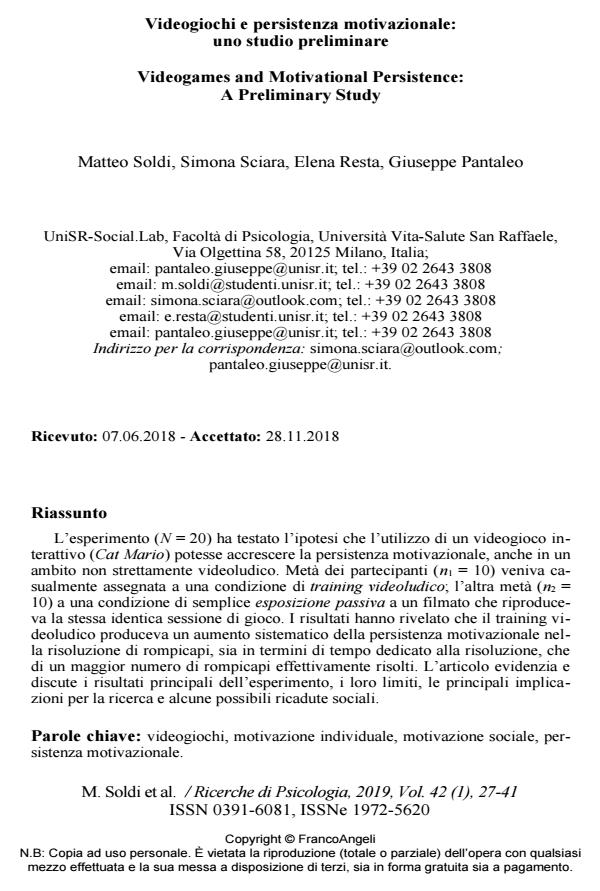Videogames and Motivational Persistence: A Preliminary Study
Journal title RICERCHE DI PSICOLOGIA
Author/s Matteo Soldi, Simona Sciara, Elena Resta, Giuseppe Pantaleo
Publishing Year 2019 Issue 2019/1
Language Italian Pages 15 P. 27-41 File size 322 KB
DOI 10.3280/RIP2019-001002
DOI is like a bar code for intellectual property: to have more infomation
click here
Below, you can see the article first page
If you want to buy this article in PDF format, you can do it, following the instructions to buy download credits

FrancoAngeli is member of Publishers International Linking Association, Inc (PILA), a not-for-profit association which run the CrossRef service enabling links to and from online scholarly content.
The experiment (N = 20) tested the hypothesis that the use of an interactive videogame (Cat Mario) would generally enhance motivational persistence, also in domains not directly related to the gaming context. One half of the sample (n1 = 10) was randomly assigned to a gaming training condition; the other half (n2 = 10) to a condition of simple passive exposure to a video reproducing the same gaming section. Results confirmed that the motivational training systematically enhanced motivational persistence in a brain teaser task, both in terms of more time spent in solving the brain teasers, and in terms of a comparatively higher number of tasks resolved. The main results of this experiment, as well as their major limitations and implications, are highlighted and discussed with respect to their potential benefits for research and society.
Keywords: Videogames, individual and social motivation, motivational persis-tence.
- Handbook of Research on Establishing Digital Competencies in the Pursuit of Online Learning Vincenza Barra, Maria Annarumma, pp.267 (ISBN:9781668470107)
Matteo Soldi, Simona Sciara, Elena Resta, Giuseppe Pantaleo, Videogiochi e persistenza motivazionale: uno studio preliminare in "RICERCHE DI PSICOLOGIA " 1/2019, pp 27-41, DOI: 10.3280/RIP2019-001002